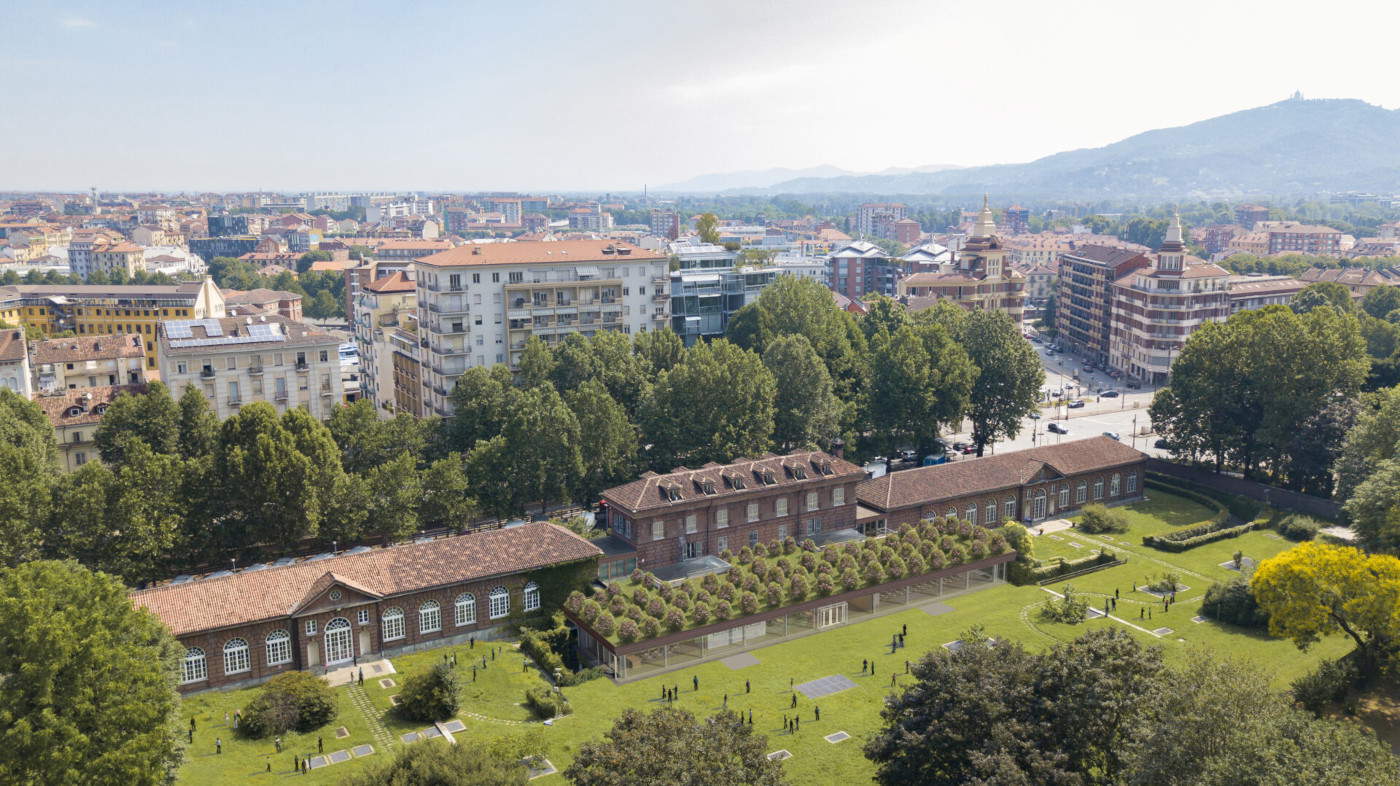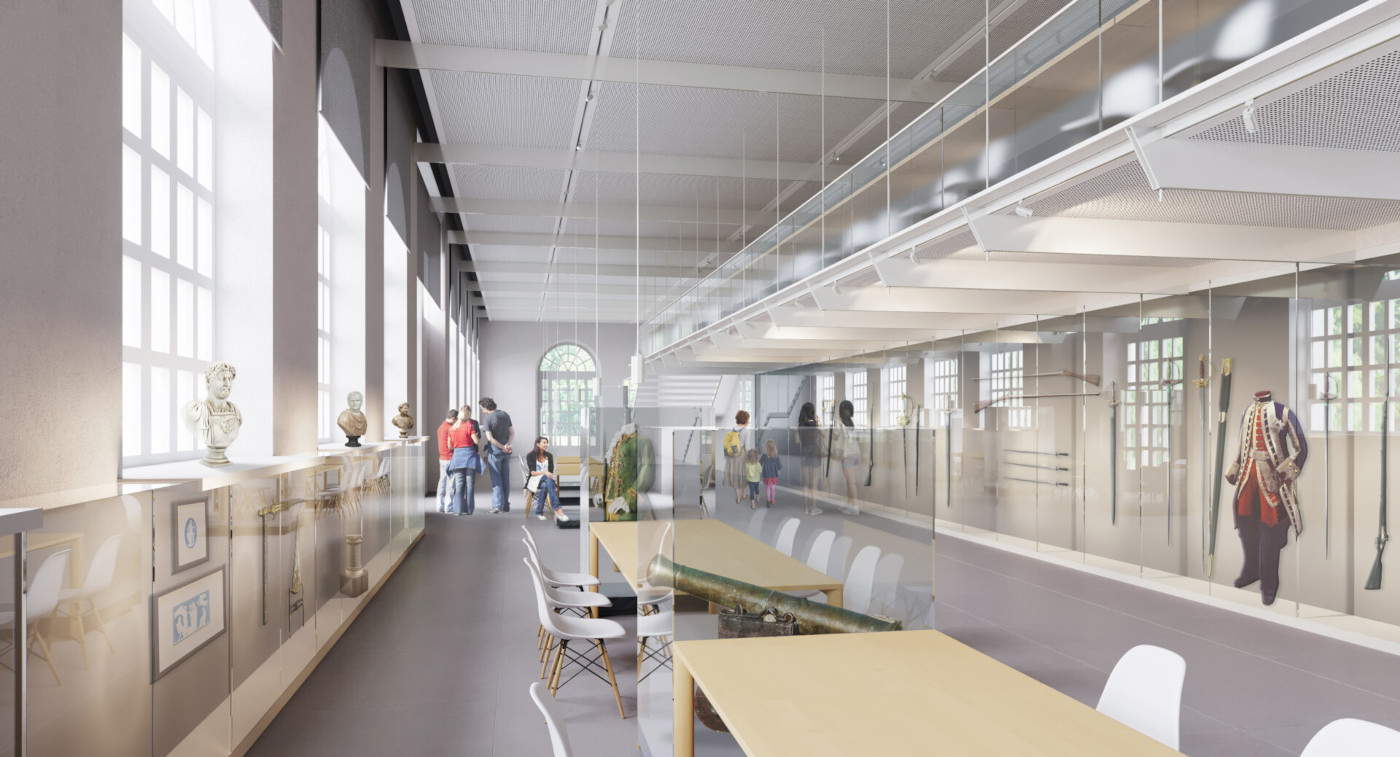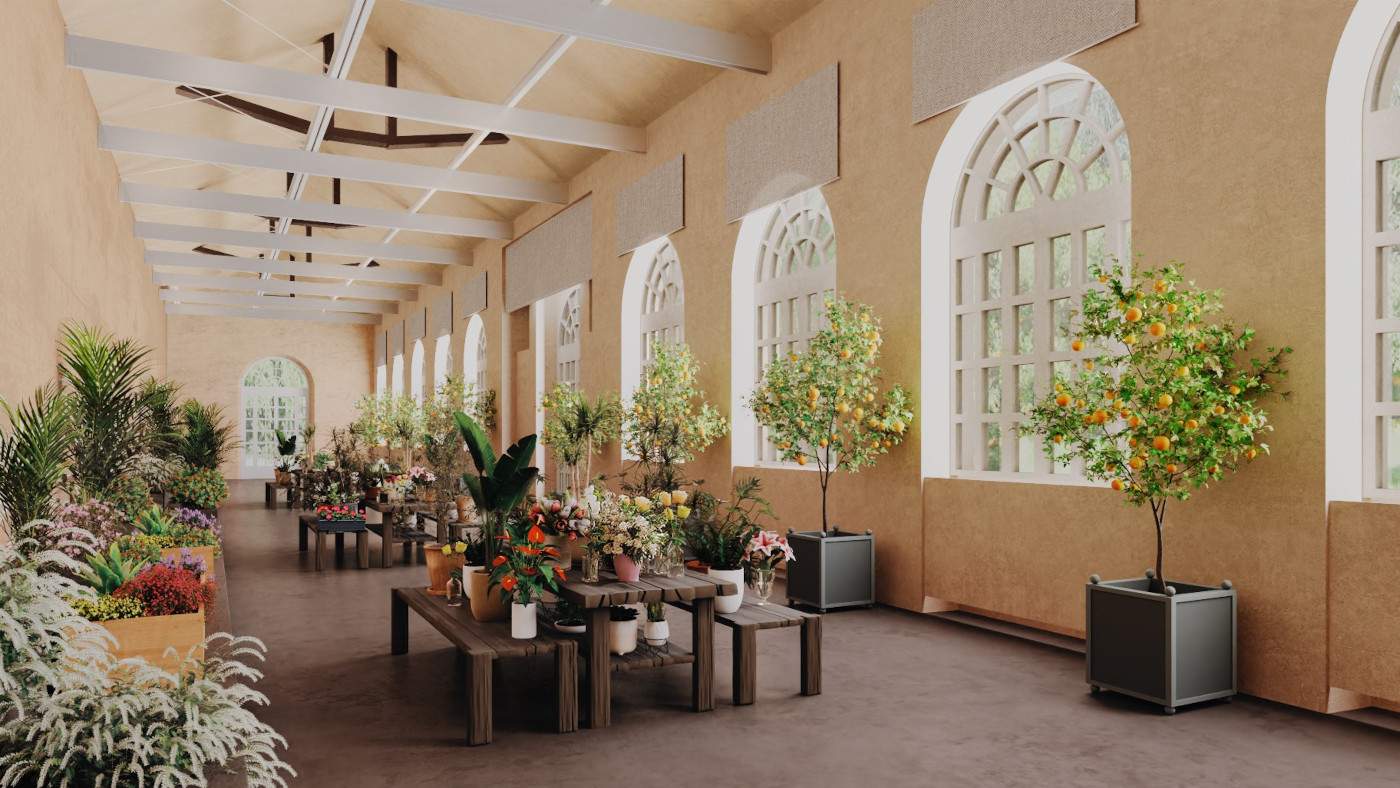The Royal Museums of Turin unveiled the construction site of the Royal Greenhouses: in fact, after hosting the Museum of Antiquities for half a century, the elegant pavilions built in the lower Royal Gardens in the early 20th century will become a new hub of services for the public and museum departments over the next three years.
The buildings in the complex will undergo renovation both architecturally, restoring their original spatial breadth, and technologically, allowing the integration of new functions and activities in accordance with modern museum standards. The redevelopment plan includes the establishment of air-conditioned exhibition areas and storage rooms, a restoration laboratory, rooms for museum educational services as well as for lectures and events, and spaces for plant protection and outdoor activities. The ultramodern rooms together with a completely new entrance for the Royal Museums, facing Corso Regina Margherita, will allow special areas of the art and archaeology collections to be highlighted and initiatives to be promoted in collaboration with the neighborhood and local institutions, promoting an increasingly close integration between the museum and the city.
Financed with a 12-million-euro fund made available by the CIPE - Culture and Tourism Plan, the project was developed by the Royal Museums together with the Soprintendenza Archeologia, Belle Arti e Paesaggio for the Metropolitan City of Turin and a team of professionals, led by the Turin-based studio Isolarchitetti with arch. Giovanni Durbiano.
“New advanced museum services, museum-city integration, networks with local institutions, the university, associations and stakeholders, youth and public engagement: these are the coordinates on which the Royal Museums of Turin intend to set their sights on the future, betting on the Royal Greenhouses in terms of environmental sustainability, innovation, sharing of the cultural heritage and enhancement of the extraordinary ensemble of art and nature that are the Royal Gardens,” said Mario Turetta, Secretary General of the Ministry of Culture and avocating Director of the Royal Museums of Turin.
“A revolution for the museum, which will be equipped with services aligned with international standards,” added Filippo Masino, project manager, “and which, with its opening on Corso Regina Margherita, is a candidate to be a bridge between the city’s historic center and the Porta Palazzo and Aurora neighborhoods, true laboratories of best practices, virtuous institutions, a kaleidoscope of world cultures and a place for the formation of new citizens.”
“The new Royal Greenhouses, thanks to their flowering roof and large glass walls, are a garden-architecture,” said Giovanni Durbiano, “a sign that does not intend to assert its presence in a peremptory way, but to fit into a fabric of pre-existing natural and historical traces in order to hybridize the perception of the Baroque walls between outside and inside.”
The historic greenhouses of the Royal Palace will reestablish the link with the Royal Gardens, transforming into a true promenade between architecture and the natural environment in the center of the city, connecting the Aurora district to Castello Square. This space will host activities aimed at young people, families and educational institutions, with the intention of enhancing the rich cultural and natural heritage.
It will first proceed with the conservative restoration of the facades, where the current windows and doors, the result of the interventions of a few decades ago, will be replaced while maintaining the original design, but ensuring advanced thermal performance for the containment of consumption. The pavilions will be freed from the bulky structures inserted in the 1970s, thus regaining their ancient double-height spatiality and views of the gardens.
The Ponente Pavilion will be a flexible space with light and reconfigurable furniture with a full-height showcase where segments of the collections, hitherto kept in storage, will be preserved, arranged according to cross-cutting themes that may range from archaeology to painting, from weapons to historic furniture.
On the other hand, the Levante Pavilion, completely immersed in the gardens in front of the Green Bastion, will recover its ancient function as a plant shelter, reinterpreting it in terms compatible with educational activities dedicated to greenery, the presentation and sale of plants, and even hospitality for small events. It will also be open to shared projects with schools, neighborhoods and associations.
The old glazed pavilion was recently eliminated: a new high-tech glazed volume with essential lines will rise in its place, housing a reception hall for the new entrance from Corso Regina Margherita, a 120-seat auditorium and a number of multi-purpose rooms equipped for conferences, exhibitions, visible restorations, cultural activities and events.
On the lower floor will be the security storerooms for the Royal Museums’ collections, behind a glass wall that will allow the public to see how the reserve space of a contemporary museum is organized; a restoration laboratory will double the area of the existing one. The upper floors of the central building, on the other hand, will be devoted entirely to educational activities and will provide the museum with large, well-equipped spaces for workshops. This will improve the museum’s accessibility with respect to urban public transport networks and make it possible to walk through the compendium from Corso Regina Margherita to Piazza Castello in a promenade among the green gardens and monumental architecture, taking the helical ramp of the Green Bastion, restored in 2021 with the same CIPE funds, which connects the two levels of the walls of the Baroque fortification.
The strong flexibility of use that will characterize these spaces is also designed to encourage potential shared uses with other entities in the area, such as districts, the University of Turin, student hostels, and Third Sector associations dedicated to youth and culture, offering quality spaces for their own initiatives.



 |
| The Royal Greenhouses of Turin's Royal Museums will become a new hub: construction site unveiled |
Warning: the translation into English of the original Italian article was created using automatic tools. We undertake to review all articles, but we do not guarantee the total absence of inaccuracies in the translation due to the program. You can find the original by clicking on the ITA button. If you find any mistake,please contact us.